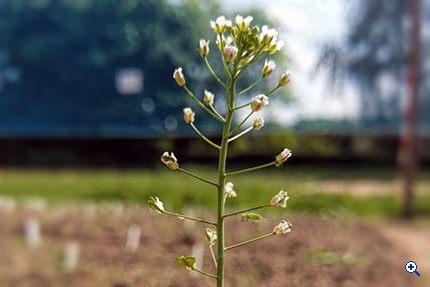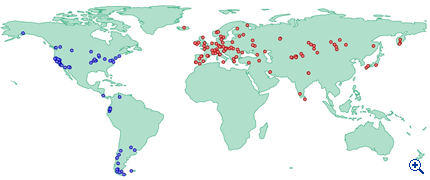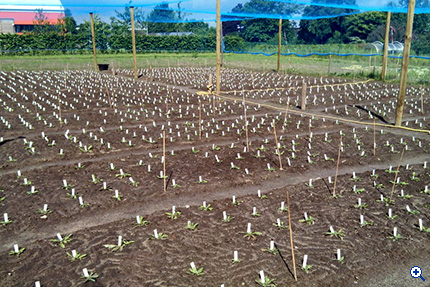Comparative genome analysis in Capsella bursa-pastoris - Evolutionary adaptation of the Shepherd's Purse
Project code: NE 314/11-2

Capsella bursa-pastoris.
Capsella bursa-pastoris (the "Shepherd's Purse") is mostly a summer- or winter annual, tetraploid and predominantly inbreeding. The species is considered to be of the most abundand flowering planst on earth. There is evidence that the Shepherd's Purse originated in Eurasia and subsequently colonized other regions of the world. C. bursa-pastoris is characterized by great colonizing ability and success in almost all man-made habitats.
The invasive capacity of weedy plants often include adaptation to a wide range of environments. This can be achieved by considerable phenotypic plasticity, as well as ecotypic differentiation. Marked local differentiation due to founder effects and a restricted gene flow as a consequence of predominant self-pollination are common features of colonizers. As the introduction of weeds in hitherto unoccupied areas is mostly accidental, especially when long-distance intercontinental introductions are concerned, an interesting evolutionary question is whether the variation pattern in the newly colonized continent reflects that from the source continent. And, if so, whether this goes back to multiple, few or single introductions, and whether ecotypic variation in the colonized continent can be traced back to the introduction of ‘preadapted’ genotypes or whether selection for adaptive genetic variation would occur after the introduction.

Sampled Material Map
For this project we grew plants from seeds collected from the proposed origination area of the species in Eurasia (red dots) and from the recently colonized areas in North and South America (blue dots). The plants have been grown in two common garden experiments in random block arrangement to collect phenotypic data for onset of floweing, plant height, leaf morphology, seed weight and number of basal branches. We also collected tissue material to estimate the genome size via flow cytometry and to do genotyping with RAD sequencing. We ended up with phenotypic data for >4.300 plants and made RAD sequencing libraries for about 1500 single samples. Sequence analysis is currently under progress.

Common Garden Field Experiment




